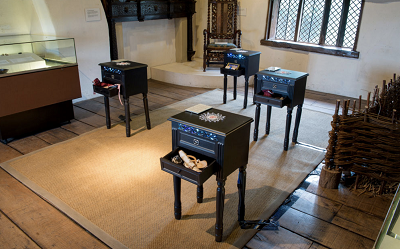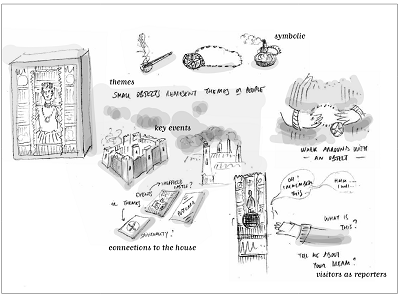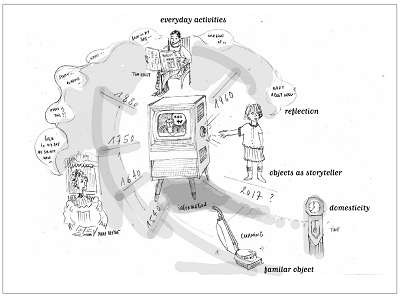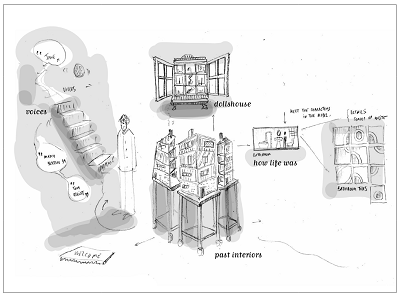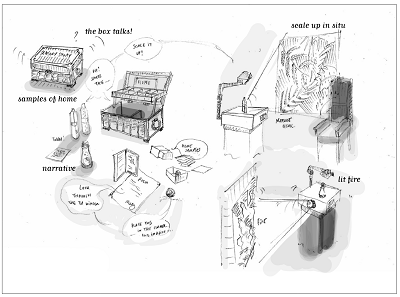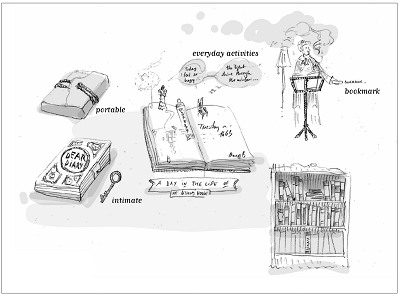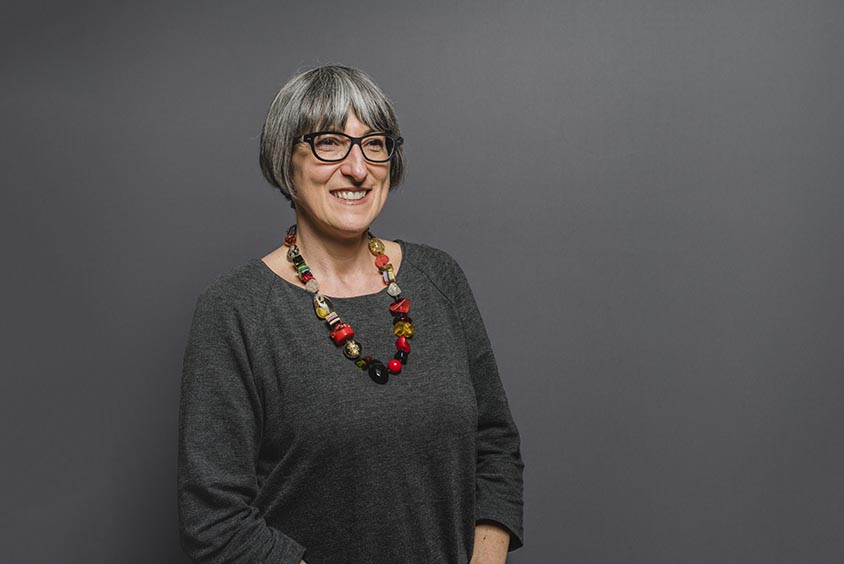
With my practice-based PhD, I intended to broaden current practice in exhibition design by means of designing for tangible interaction house museums. The main goals were (1) to identify the challenges and opportunities for designing interactive experiences in historic houses, (2) to show how to include underrepresented actors such as museum volunteers in the creative process, and (3) to use design as a means to demonstrate the potential of tangible interaction in house museums. I was motivated by my experience as an exhibition designer where I identified a space for experimenting with a new approach to exhibition design, one that was more inclusive, multisensory and design-led. To achieve this, I blended Research Through Design (RtD) with co-creation to magnify the voices and roles of museum volunteers in the context of one historic house: the Bishops’ House museum (Sheffield, UK).
I designed for tangible interaction where embedded technology enabled me to augment the visiting experience in ways that were magical, embodied and highly evocative. The thesis reports the four phases of my investigation in which I reflect on my process alongside presenting findings from co-creating and implementing novel experiences of heritage at the museum. I contribute to the field of exhibition and interaction design at different levels: firstly, by providing practitioners with guidance on how to design for sensitive places like the Bishops’ House; then, by developing my own tools to nurture co-creation during the RtD process; finally, by addressing issues with current practice through design and showing how tangible interaction can enhance the visiting experience in the particular context of house museums. With my work, I believe that I have opened a new area of exploration for exhibition design where challenges and concerns can be addressed through an inclusive approach with craftmanship at its centre.
Shura link can be accessed here.

